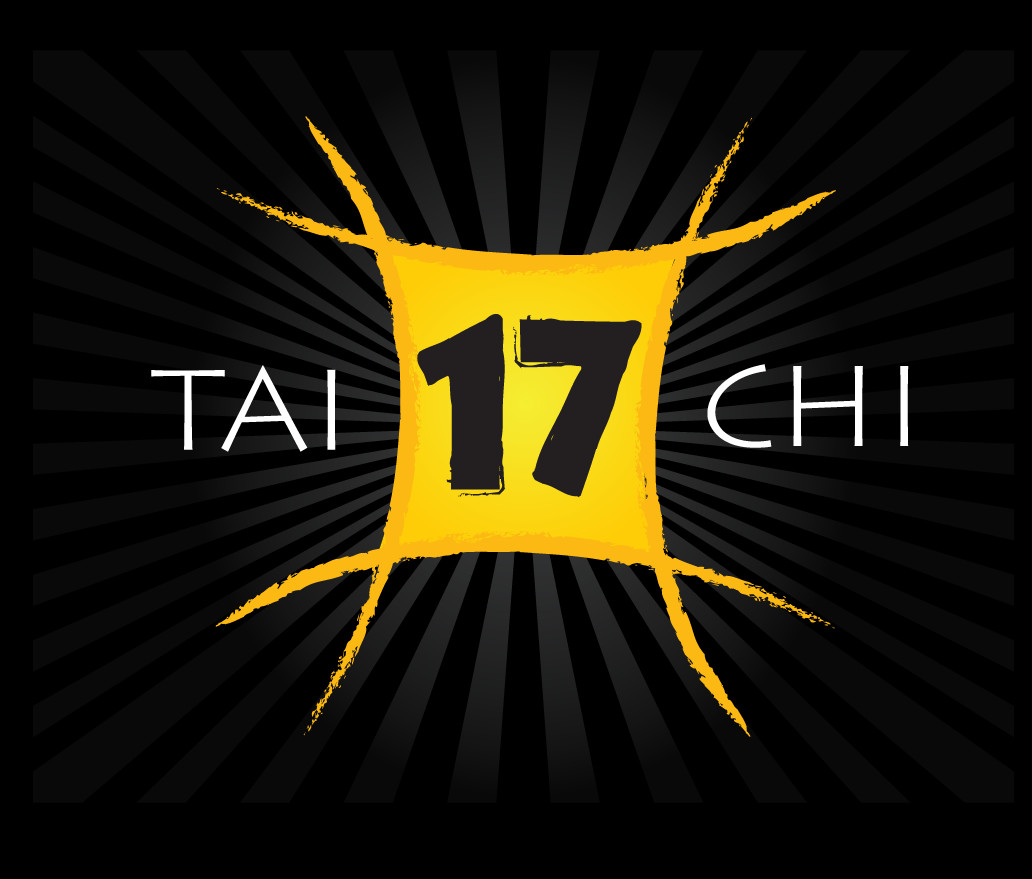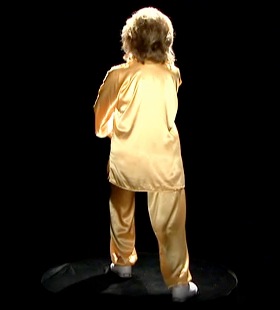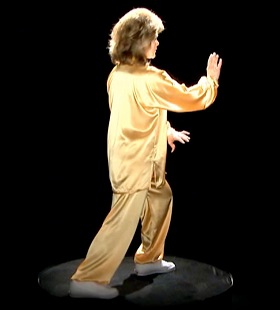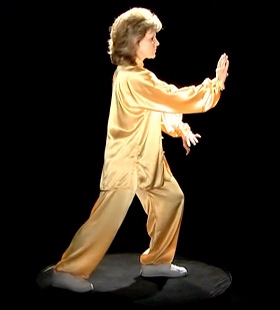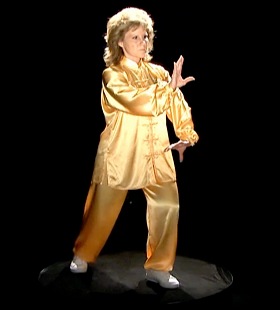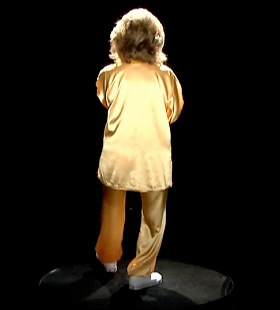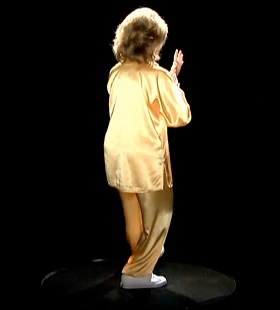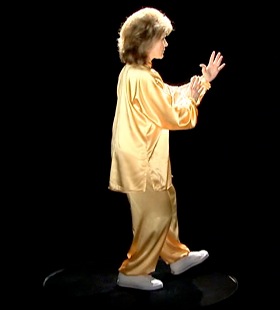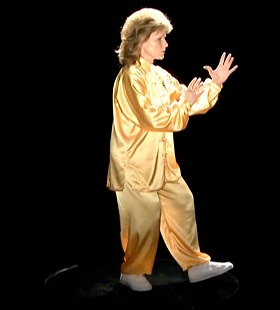Move #8 Play the Peipa
Start Posture Description
Most of the weight is on the left foot. Right leg is straight and both feet are flat on the floor. The shoulders and hips are squared to the left foot.
Left arm is round with palm down above the left knee.
Right palm presses forward to shoulder height with the thumb lined up to the center of the body. Elbow towards the floor.
Follow me
The video loops 5 times with breaks for you to return to the start posture and practice it again. Practice each move many times until you are able to do the move without watching the video.
Step by Step Instruction
Keeping the weight on the left foot, bring the right foot in half step closer. At the same time, raise the left wrist to meet the right wrist, fingertips up.
Push up from left ball of the foot to the top of the head and stand tall on right foot. Open the chest to separate the arms. Torso faces the right front corner. Right arm is round with the palm out, centered at heart-level. Left palm presses to the front, in line with the left foot, at shoulder height. Left leg is straight and pushes from the ball of the foot – toes pointing straight forward.
Pick up the left toe and place the heel down. Relax and sink to high sit on the right foot, both knees are bent, turn the hips slightly to the left hip joint. 70% of the body weight is on the right foot.
Drop the left elbow, rotate both forearms, palms face each other. Bring both hands toward the center of the body. Left hand is at shoulder level and right hand is at heart level (line up with left elbow)
Before going to the next move, please complete the self assessment.
End Posture Description
Most of the weight is on right foot. Left leg is resting on the heel - both knees bend. Both arms are round with elbows angled down.
Both palms are aligned in the center of the body.
Left palm is at shoulder level ahead of the right palm.
Right palm is at heart level
Practice from the beginning
To memorize the sequence, practice from the 1st move to the current move many times.
